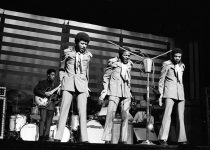How “What’s Going On” Redefined Motown’s Legacy
Marvin Gaye’s “What’s Going On” stands as a cornerstone in soul and pop music history, blending thought-provoking social commentary with stunning musicality. Released in 1971, this iconic track not only reached No. 1 on the Billboard R&B chart and No. 2 on the Billboard Hot 100, but also redefined the role of music as a platform for societal reflection. Inspired by conversations with his brother, a Vietnam War veteran, and Gaye’s own observations of the political and social turmoil of the late 1960s, the song’s themes of love, unity, and peace are timeless and universal
The track marked a dramatic shift in Marvin Gaye’s artistic trajectory, transitioning from Motown’s romantic tunes to deeper, socially conscious messages. The saxophone introduction and layered vocal harmonies immediately capture listeners, delivering a message that continues to resonate today
What’s Going On
- A Risky Move: Initially, Motown’s Berry Gordy disliked the song, calling it “the worst thing” he’d heard. Gaye refused to record anything else until it was released, and his perseverance paid off—it became one of Motown’s fastest-selling singles
- Unique Recording: Gaye’s lead vocal is actually two takes blended together by accident, creating its signature double-layered sound
- Cultural Impact: The song not only addresses the Vietnam War but also issues of racism, police brutality, and environmental concerns. It became an anthem for hope and change across generations
Video

